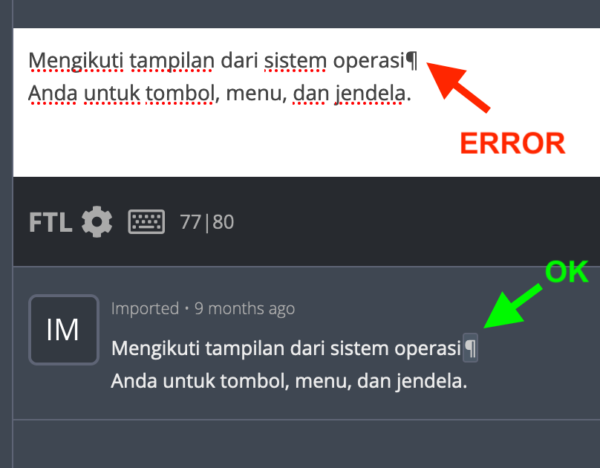Mozilla Localization (L10N): L10n Report: June 2021 Edition |
Please note some of the information provided in this report may be subject to change as we are sometimes sharing information about projects that are still in early stages and are not final yet.
Welcome!
Are you a locale leader and want us to include new members in our upcoming reports? Contact us!
New content and projects
Firefox 89 (MR1)
On June 1st, Mozilla released Firefox 89. That was a major milestone for Firefox, and a lot of work went into this release (internally called MR1, which stands for Major Release 1). If this new update was well received — see for example this recent article from ZDNet — it’s also thanks to the amazing work done by our localization community.
For the first time in over a decade, we looked at Firefox holistically, making changes across the board to improve messages, establish a more consistent tone, and modernize some dialogs. This inevitably generated a lot of new content to localize.
Between November 2020 and May 2021, we added 1637 strings (6798 words). To get a point of reference, that’s almost 14% of the entire browser. What’s amazing is that the completion levels didn’t fall drastically:
- Nov 30, 2020: 89.03% translated across all shipping locales, 99.24% for the top 15 locales.
- May 24, 2021: 87.85% translated across all shipping locales, 99.39% for the top 15 locales.
The completion level across all locales is lower, but that’s mostly due to locales that are completely unmaintained, and that we’ll likely need to drop from release later this year. If we exclude those 7 locales, overall completion increased by 0.10% (to 89.84%).
Once again, thanks to all the volunteers who contributed to this successful release of Firefox.
What’s new or coming up in Firefox desktop
These are the important deadlines for Firefox 90, currently in Beta:
- Firefox 90 will be released on July 13. It will be possible to update localizations until July 4.
- Firefox 91 will move to beta on July 12 and will be released on August 10.
Keep in mind that Firefox 91 is also going to be the next ESR version. Once that moves to release, it won’t generally be possible to update translations for that specific version.
Talking about Firefox 91, we’re planning to add a new locale: Scots. Congratulations to the team for making it so quickly to release!
On a final note, expect to see more updates to the Firefox L10n Newsletter, since this has proved to be an important tool to provide more context to localizers, and help them with testing.
What’s new or coming up in mobile
Next l10n deadlines for mobile projects:
- Firefox for Android v91: July 12
- Firefox for iOS v34.1: June 9
Once more, we want to thank all the localizers who worked hard for the MR1 (Proton) mobile release. We really appreciate the time and effort spent on helping ensure all these products are available globally (and of course, also on desktop). THANK YOU!
What’s new or coming up in web projects
AMO
There are a few strings exposed to Pontoon that do not require translation. Only Mozilla staff in the admin role to the product would be able to see them. The developer for the feature will add a comment of “no need to translate” or context to the string at a later time. We don’t know when this will be added. For the time being, please ignore them. Most of the strings with a source string ID of src/olympia/scanners/templates/admin/* can be ignored. However, there are still a handful of strings that fall out of the category.
MDN
The project continues to be on hold in Pontoon. The product repository doesn’t pick up any changes made in Pontoon, so fr, ja, zh-CN, and zh-TW are now read-only for now. The MDN site, however, is still maintaining the articles localized in these languages plus ko, pt-BR, and ru.
Mozilla.org
The websites in ar, hi-IN, id, ja, and ms languages are now fully localized through vendor service since our last report. Communities of these languages are encouraged to help promote the sites through various social media platforms to increase download, conversion and create new profiles.
What’s new or coming up in SuMo
Lots of exciting things happening in SUMO in Q2. Here’s a recap of what’s happening:
- You can now subscribe to Firefox Daily Digest to get updates about what people are saying about Firefox and other Mozilla products on social media like Reddit and Twitter.
- We now have release notes for Kitsune in Discourse. The latest one was about advanced search syntax which is a replacement for the former Advanced Search feature.
- We are trying something new for Firefox 89 by collecting MR1 (Major Release 1) specific feedback from across channels (support forum, Twitter, and Reddit). You can look into how we’re doing it on the contributor thread and learn more about MR1 changes from a list that we put together on this spreadsheet.
As always, feel free to join SUMO Matrix room to discuss or just say hi to the rest of the community.
What’s new or coming up in Pontoon
Since May, we’ve been running experiments in Pontoon to increase the number of users reading notifications. For example, as part of this campaign, you might have seen a banner encouraging you to install the Pontoon Add-on — which you really should do — or noticed a slightly different notification icon in the top right corner of the window.
 Recently, we also sent an email to all Pontoon accounts active in the past 2 years, with a link to a survey specifically about further improving notifications. If you haven’t completed the survey yet, or haven’t received the email, you can still take the survey here (until June 20th).
Recently, we also sent an email to all Pontoon accounts active in the past 2 years, with a link to a survey specifically about further improving notifications. If you haven’t completed the survey yet, or haven’t received the email, you can still take the survey here (until June 20th).
Look out for pilcrows
When a source string includes line breaks, Pontoon will show a pilcrow character (¶) where the line break happens.
 This is how the Fluent file looks like:
This is how the Fluent file looks like:
onboarding-multistage-theme-tooltip-automatic-2 =
.title =
Inherit the appearance of your operating
system for buttons, menus, and windows.
While in most cases the line break is not relevant — it’s just used to make the source file more readable — double check the resource comment: if the line break is relevant, it will be pointed out explicitly.
 If they’re not relevant, you can just put your translation on one line.
If they’re not relevant, you can just put your translation on one line.
If you want to preserve the line breaks in your translation, you have a few options:
- Use SHIFT+ENTER to create a new line while translating.
- Click the ¶ character in the source: that will create a new line in the position where your cursor currently sits.
- Use the COPY button to copy the source, then edit it. That’s not really efficient, as your locale might need a line break in a different place.
Do not select the text with your mouse, and copy it in the translation field. That will copy the literal character in the translation, and it will be displayed in the final product, causing bugs.
If you see the ¶ character in the translation field (see red arrow in the image below), it will also appear in the product you are translating, which is most likely not what you want. On the other hand, it’s expected to see the ¶ character in the list of translations under the translation field (green arrow), as it is in the source string and the string list.
 Events
Events
- We have held our first Localization Workshop Zoom event on Saturday June 5th. Next iterations will happen on Friday June 11th and Saturday June 12th. We have invited active managers and translators from a subset of locales. If this experience turns out to be useful, we will consider opening up to an even larger audience with expanded locales.
- Want to showcase an event coming up that your community is participating in? Reach out to any l10n-driver and we’ll include that (see links to emails at the bottom of this report)
Friends of the Lion
Know someone in your l10n community who’s been doing a great job and should appear here? Contact one of the l10n-drivers and we’ll make sure they get a shout-out (see list at the bottom)!
Useful Links
- #l10n-community channel on Element (chat.mozilla.org)
- Localization category on Discourse
- L10n blog
Questions? Want to get involved?
- If you want to get involved, or have any question about l10n, reach out to:
- Delphine – l10n Project Manager for mobile
- Peiying (CocoMo) – l10n Project Manager for mozilla.org, marketing, and legal
- Francesco Lodolo (flod) – l10n Project Manager for desktop
- Th'eo Chevalier – l10n Project Manager for Mozilla Foundation
- Matjaz – Pontoon dev
Did you enjoy reading this report? Let us know how we can improve by reaching out to any one of the l10n-drivers listed above.
https://blog.mozilla.org/l10n/2021/06/10/l10n-report-june-2021-edition/
| Комментировать | « Пред. запись — К дневнику — След. запись » | Страницы: [1] [Новые] |






